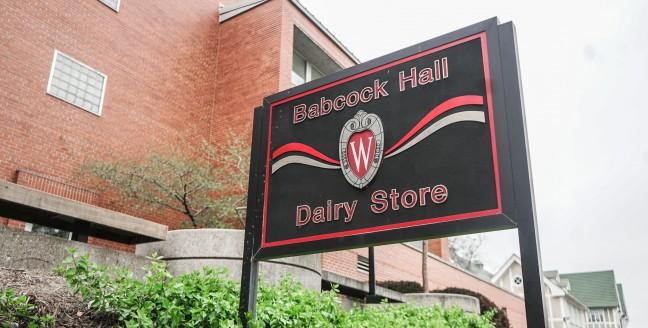Everyone has their favorite University of Wisconsin tradition. It could be cheering the Badgers on in Camp Randall, chucking snowballs at the Battle for Bascom or simply hanging out with friends on the Memorial Union Terrace, maybe with a scoop of ice cream. UW’s homemade Babcock ice cream is a favorite tradition of students young and old and has become to symbolize everything UW is about.
Babcock Hall produces a little more than 100,000 gallons of ice cream per year for UW students, families, staff and community members. They have more than 30 different flavors and continuously experiment with new ones. It’s no wonder why the delicious ice cream has become a tradition of Badgers and one with the community as a whole. Events, socials, galas and dinner parties often time serve Babcock to their guests, and Chancellor Blank even has her own ice cream flavor in her honor.
What may often be forgotten, though, is that entire communities can’t participate in the symbolic tradition because of one ingredient: beef gelatin. Gelatin is a colorless and odorless ingredient that gives food the nice texture of fat without adding on calories. But, gelatin is rarely used in ice cream anymore because several other healthier, more inclusive products have been created. Gelatin does not make the ice cream taste better, does not speed up production time, nor is it any cheaper. What’s worse is that it excludes communities that cannot consume beef by that cannot have Babcock with beef in it, mainly Jewish, Hindu and vegetarian students.
The arguments for keeping gelatin are slim. Up until this year, the gelatin in Babcock was from pork, but after complaints from different communities last year, it was switched to beef as if that solves all the inclusivity issues. The only main other reason why Babcock ice cream chooses to stay with gelatin is for tradition. And tradition is important, as this ice cream is, after all, a symbolic tradition for alumni to enjoy the rest of their lives after leaving Madison. But what’s the point of a tradition if it excludes certain communities from participating?
From a religious standpoint, Jewish students who choose to keep Kosher, or Jewish laws regarding food, cannot mix meat or animal byproduct and dairy together. Hindus cannot eat beef or beef byproduct. Vegetarians cannot eat beef. Even most Buddhists are vegetarians by their dietary restrictions.
If Jews, Hindus, Buddhists and vegetarians are not included in one of the most symbolic traditions of this campus, can UW really call itself inclusive?
We may have sensitivity training, diversity days and social justice workshops, and we may, as a school, pass diversity statements saying that diversity and inclusivity is our number one goal. But what does it say when we’re not even willing to change our traditions to include the rest of the student body?
Instead, Babcock ice cream should use vegetarian stabilizers. Options like carrageenan or pectin are known for not changing the flavors or texture of the ice cream, but are instead made from plants. Most ice cream stores and factories use one of these, or other vegetarian options, in their ice cream. The unique Babcock flavors, textures and tastes will all stay the same. The only difference is that more students can now enjoy them.
It’s time that we, as a community of diverse students, look at our everyday traditions to make sure they are inclusive of all students. Traditions are important. They define who we are and form connections between students, alumni, families and the community as a whole. Changing the Babcock ice cream formula to make it inclusive of all student identities shows that UW can both honor tradition, but still make it more inclusive toward modern students.
Yogev Ben-Yitschak (ybenyitshak@wisc.edu) is a sophomore majoring in marketing


